June in the garden is a month of results, when baby birds are finally posted out of nests to announce the fruits of their parents’ labours.
The lawn fills up with brown starlings and trees play host to the new generation of tits with yellow cheeks and frothy calls. Everywhere in the garden there are youngsters facing up to their new lives with vigour and uncertain co-ordination in equal amounts – the newly fledged.
A fledgling looks fluffy and unkempt, and its wing and tail feathers appear to be too short for it. Far from being immaculate, as a new model should be, it will have an unfinished, imperfect, bulk-produced look. The clear implication is that there has been some cost-cutting in the course of its production.
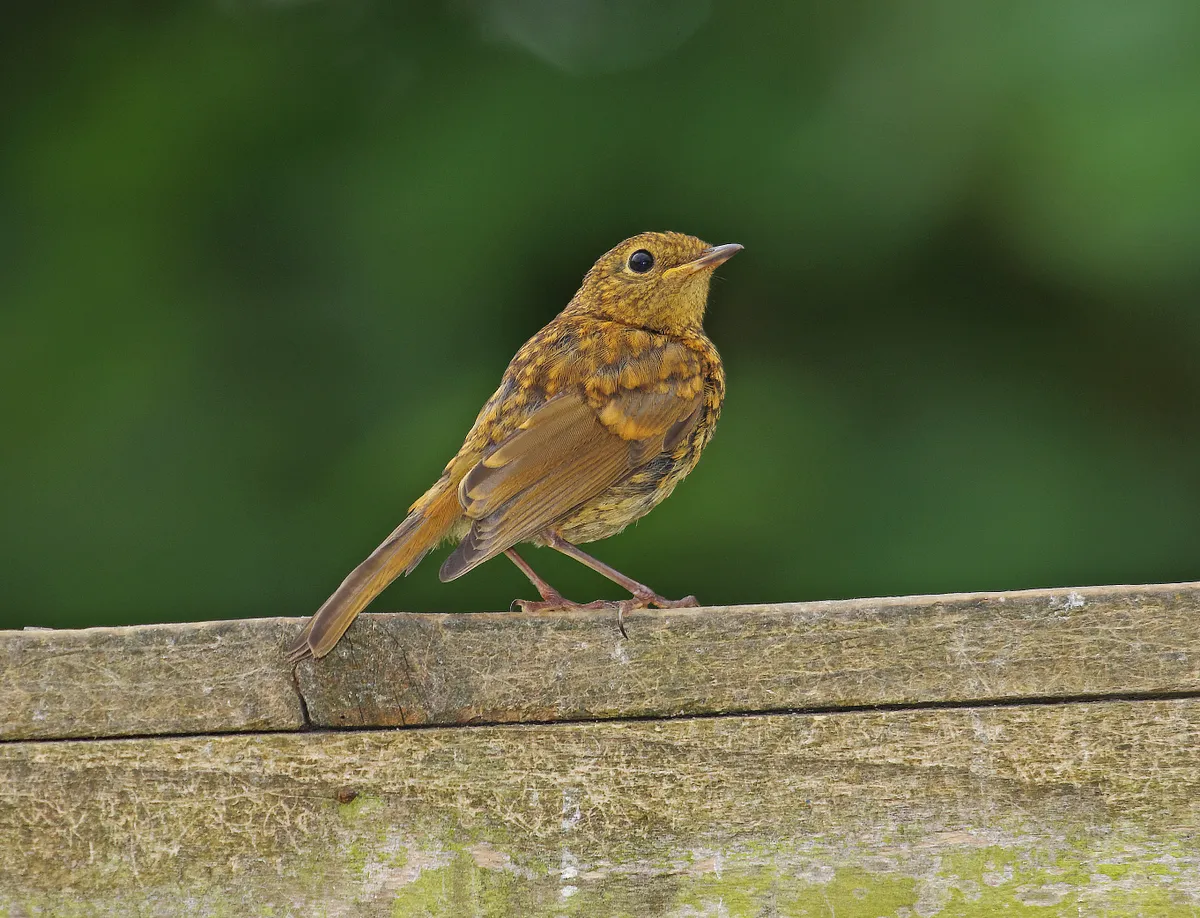
Why do baby birds look different to adult birds?
And indeed, costs have been cut. Most of the energy derived from a nestling’s food is diverted into growing as rapidly as possible, not into producing magnificent plumage.
A youngster’s weight might need to increase by as much as 10 times from the point that it departs the egg to the point that it departs the nest.
That can leave fashionable fixtures such as plumage a little threadbare, though some of the loss is made up in the first few days after leaving. It’s the reason why young birds often look so scruffy and forlorn.
Nevertheless, a fledgling leaving the nest is generally equal in size to an adult and can, in fact, look very similar indeed. All around the country, the layman asks: “Where are all the baby pigeons?” And the answer is: in front of you, but well disguised, hardly different from any other pigeons.
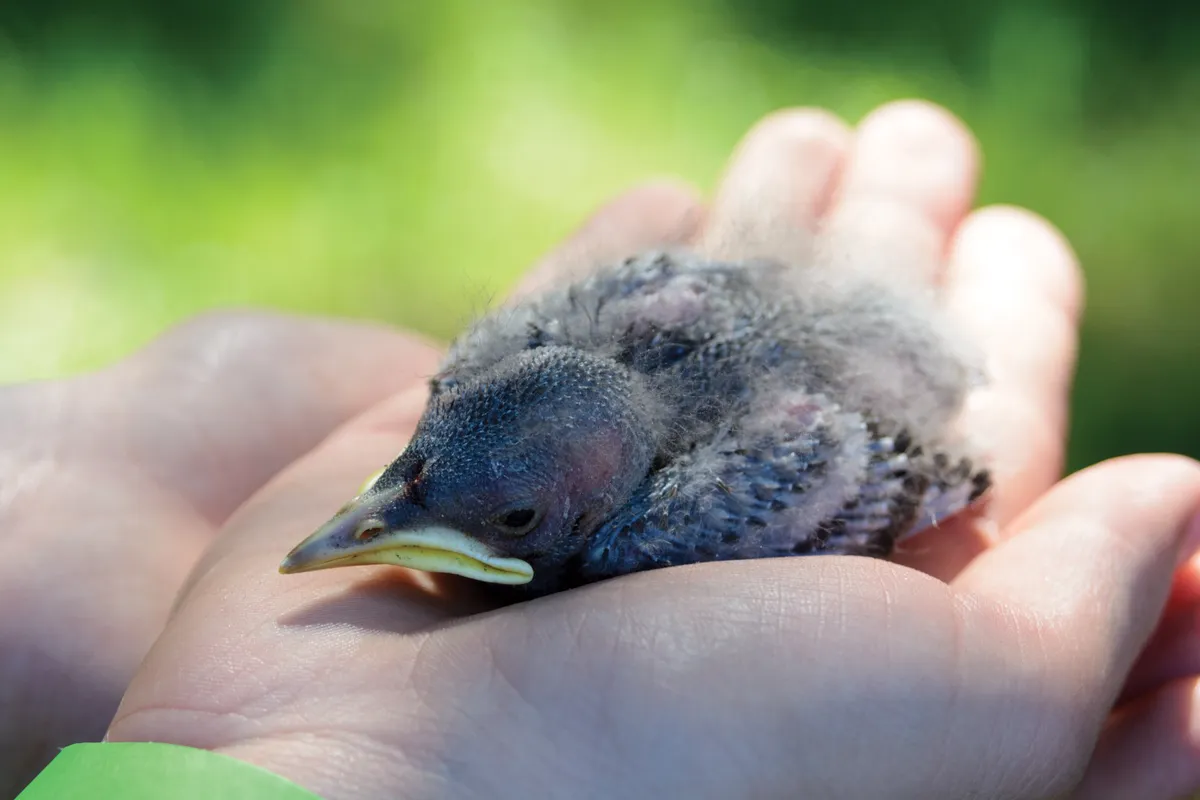
There are clear differences in detail between the adults and young of various birds for those who look carefully: a young woodpigeon will lack the white neck patch of an adult, a young blackbird will have its own shade of brown, and a young robin will have just a touch of ochre, not orange, on its breast.
If you are fortunate enough to have spotted flycatchers in your garden, this youthful stage is the only time that their eponymous spots will ever show. Indeed, spots – that unloved badge of adolescence – are often found on young birds’ plumage: on robins, blackbirds and green woodpeckers, for example.
When do baby birds leave the nest?
The actual leaving of a nest appears to be an agonising experience for both young and adults. It normally happens in the early morning, but can be highly protracted.
Perhaps the youngsters feel as unready and unsteady as they look, for most baby birds show a considerable reluctance to make the required leap from nest platform to perch.
No matter that in recent days they have been enthusiastically flapping their wings and, if they are in a hole, leaping up to the entrance. That was preparation; this is reality. In their hesitation they might require considerable coaxing from their stressed-out parent or parents.
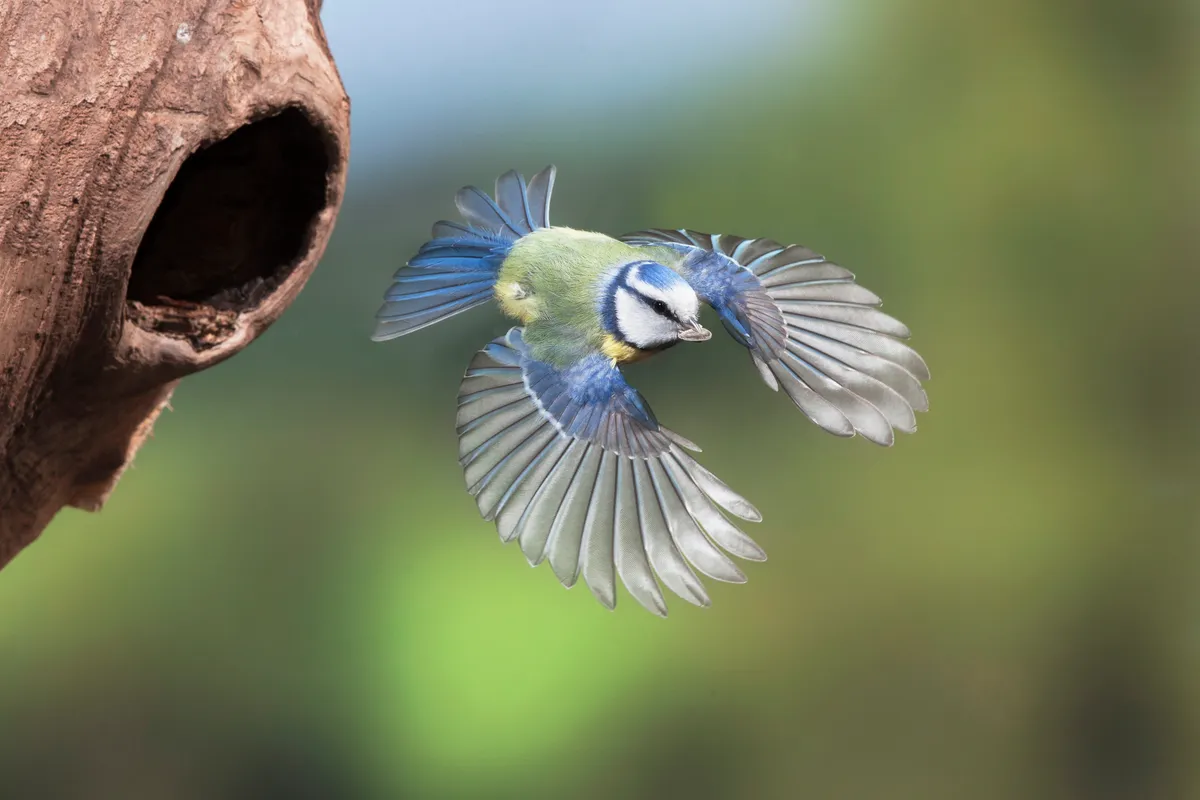
In many garden birds, a genuine inducement is needed. The parents bring food to the nest as usual but, instead of offering it direct to the quaking youngster, actually remain a little distance away, out of range but not out of sight. Eventually hunger wins and the chick makes its first flight; but it’s often a tortured passage.
House martins are rather less subtle in their enticements. Their young seem about as reluctant to leave their nests as militant squatters might be, and so the parents perform a special luring display for them, which may be repeated continually over the course of several days. Each adult will fly up to the entrance and hover there briefly, offering calls of encouragement.
This carries on until, eventually, the stand-off finishes with the first reluctant launch into the air. But it can be a long haul and, much later in the season, almost the whole colony will gather together, flying to and fro, inducing the more stubborn chicks to leave.
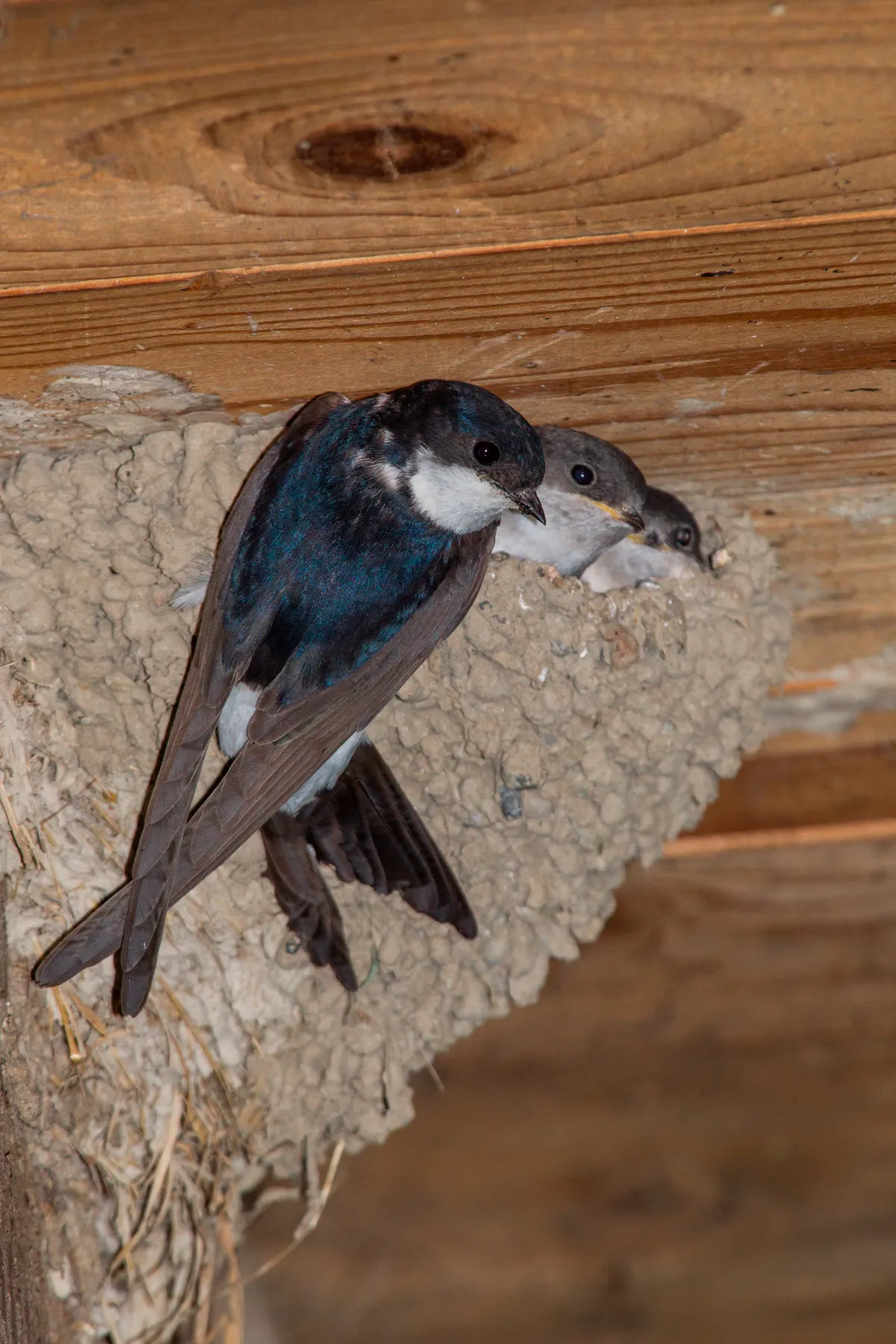
The risks for baby birds leaving the nest
Of course, the aversion to leaving the nest is understandable. Though nests should never be considered as safe homes – being immovable and at the centre of the parents’ attention, they are dangerous places to be – the first day of leaving can be as perilous as any day a young bird will ever face.
For example, starvation is a real possibility; young birds leaving the nest have precious few fat reserves and must find enough food on their first day to fuel their first night. And they must also, of course, avoid predators.
There is no question that young birds are highly appealing to many carnivorous creatures. Sparrowhawks, for example, rely on a ready supply of inexperienced fledglings to nourish their own chicks. Cats are an insidious threat to millions, and in rural gardens even weasels may join the ranks of those gorging on the fast food.
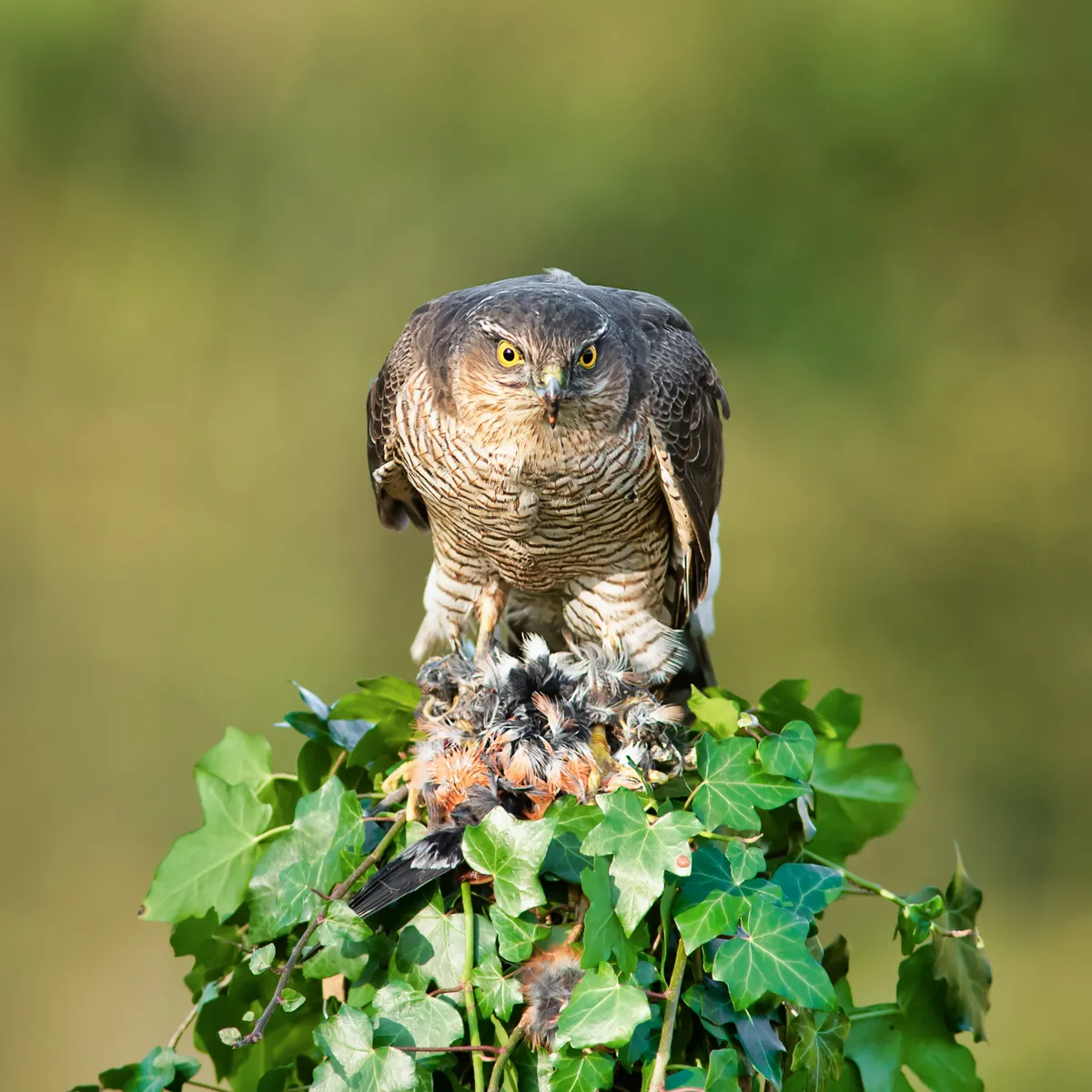
And in recent years, the omnivorous magpie, having become a common and conspicuous feature of the garden scene, has come to be regarded, unfairly, as an arch executioner of suburban youth.
It’s a distressing early summer scene: before the eyes of a shocked householder and panicky parents, a brood of fledglings can be mopped up by a pair of magpies. And it only takes one or two experiences to turn the enraged gardenwatcher into a fully committed member of the culling lobby.
The trouble is, magpies do their worst out in the open, in public, while cats are more private – and more prolific. And there is remarkably little quantifiable evidence as yet that magpies, despite appearances, actually seriously reduce wildbird populations of their own accord.

Yet the magpie, like its relative, the carrion crow, is a master of the art of bad publicity. The carrion crow used to gorge itself at the gallows and thrive during the plagues; and it’s never been forgiven.
The parent birds of fledglings naturally do all they can to protect their charges against the activities of such predators, but the truth is, if detected, there is little a small bird can achieve. It can give off alarm calls to cut the loop of the youngsters’ persistent begging, giving the suddenly quiet and still brood a chance of being overlooked, but that’s about it.
How long do birds look after their chicks for?
In truth, the actual commitment of parents to their newly-promoted fledglings is quite variable. The majority of garden birds, including wrens, dunnocks and blackbirds, feed their young for about two and a half weeks before insisting they fend for themselves.
young starlings join flocks of their peers after only a few days, and young tits, moving up to a canopy that may be literally dripping with caterpillars, may similarly become independent after a week or so.
Parental care has a certain expediency. And that final decision to abandon a chick to its uncertain future is not necessarily made with the newly-fledged’s best interest in mind, either.
Though most parents invest a great deal of effort into their chicks’ welfare, that commitment is inevitably finite, and after a while attention will unconsciously turn to the adults’ next breeding attempt, even if, for some, that is not until next year.
For many, this abandonment of first broods is a necessary prerequisite to the rest of the summer. A second brood beckons and the first is history. In some garden birds, it’s all about those results.

